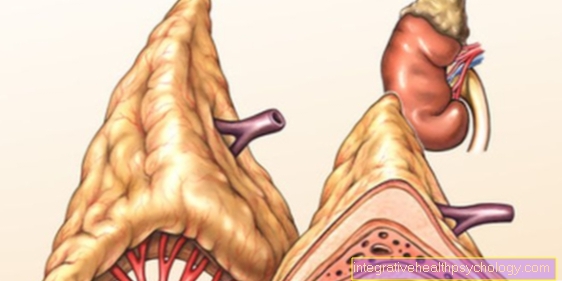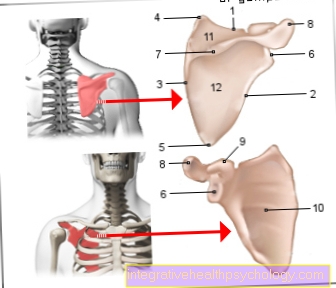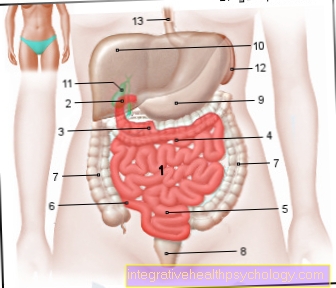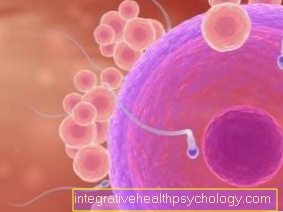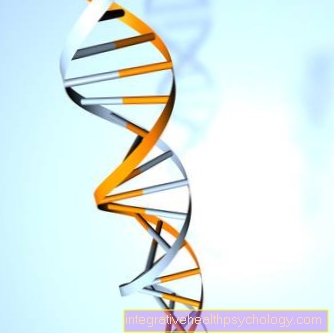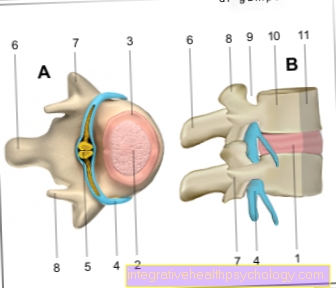Unfulfilled desire to have children
Synonyms
Infertility, fertility, sterility (lat. Sterilitas), infertility
English: infertility, barrenness
definition

Infertility is the absence of a pregnancy for at least 2 years, although there is a desire to have children and regular sexual intercourse takes place. This unfulfilled desire to have children is seen as primary if the couple has never fathered a child, while the condition after a pregnancy has taken place is referred to as secondary in the past.
Infertility does lead to pregnancy, but it cannot be carried to term. This means that the woman has repeated miscarriages (Please refer Miscarriage). In men, infertility refers to a finding in the sperm examination (spermiogram) that indicates inadequate quality or quantity. Both lead to an unfulfilled desire to have children.
Read more on the topic: Desire for children
Unfulfilled desire to have children
There is one for every tenth pair unfulfilled desire to have children available. Whatever the personal motivation for a child, the unfulfilled desire to have children can put a lot of strain on the partnership and psyche of those affected. In desperation, many couples switch back and forth between many doctors.
Causes in men

- Sperm associated
- Organic
- Functional
Causes in women
- Ovarian-Associated Causes
- Fallopian tube-associated causes
- Uterine-associated causes
- Cervical-Associated Causes
- Vaginal causes
- Mental causes
- Other causes
Therapy of the unfulfilled desire to have children
Therapy in men
In a third of the cases, the cause of the unfulfilled desire to have children lies with the man. The causes are divided into sperm-associated, organic and functional.
- Sperm associated
Examination of the ejaculate (Semen analysis) represents the simplest and most uncomplicated method for clarifying an unresolved, unfulfilled desire to have children. Based on the normal findings (Normozoospermia) pathological changes can be defined very precisely: Oligozoospermia denotes a too low sperm concentration in the ejaculate, asthenozoospermia an abnormal mobility of the sperm cells. Teratozoospermia is the abnormal shape of the sperm. If all three abnormalities occur in the ejaculate at the same time, it is called OAT syndrome. If there are no sperm in the ejaculate at all, it is azoospermia, and if there is no ejaculate, it is called aspermia. Obviously, if a man has one or more of these factors, it can seriously affect the man's fertility.
Therapeutically, any harmful influences such as nicotine or stress should be avoided. Medicinal attempts are being made with the male sex hormone testosterone or with hormones that stimulate the pituitary gland directly and thus indirectly stimulate testosterone production
Read more on the topic: Sperm
- Organic
Any previous injury, inflammation or congenital malformation of the male sexual organs and the urethra can reduce male fertility by impairing sperm development. A past mumps infection (Please refer Mumps) as well as harmful substances such as nicotine, alcohol and drugs. Inflammation should be tackled with antibiotics and malformations treated surgically if possible.
- Functional
This refers to an impairment in the function of the sexual organs such as erectile dysfunction, libido disorders and ejaculation disorders. In addition to advanced age, psychological conflicts are also responsible for this.
Therapy in women
In women, numerous factors, which are explained below, can influence fertility and thus the unfulfilled desire to have children.
- Ovarian-Associated Causes
Infertility caused by ovarian problems (Please refer Ovaries) is found in a third of the affected couples. What the different forms have in common is that the egg does not ripen or crack, which is a basic requirement for pregnancy. This can be caused by a lack of hormones that are produced in the brain and stimulate the maturation and ultimately the cracking of the egg. The basis here can be damage to the brain itself or severe physical stress, such as that caused by stress, massive underweight (e.g. anorexia) or competitive sports.
However, the cause can also lie with the ovary itself, if there are deformities, genetic disorders or radiation or chemotherapy as part of cancer therapy (e.g. breast cancer, ovarian cancer).
An overproduction of the male hormone testosterone or the hormone prolactin, as occurs during therapy with dopamine antagonists (contained in tricyclic antidepressants, neuroleptics, methyldopa and MCP) or a tumor, also affects fertility.
A diagnosis can include by hormone tests directly in the blood and indirectly via the so-called basal temperature curve (with daily body temperature measurement, the temperature usually increases by 0.5 ° C in the second half of the cycle). More invasive procedures are also used to examine the cycle sequence.
Prolactin inhibitors and so-called ovulation triggers (Antiestrogens) are used, such as clomiphene. If this is not successful, other hormones (HMG, HCG, GnRH) are administered. With these very effective treatments, however, there is a risk of ovarian hyperstimulation syndrome (see below), which can be very dangerous, and the increased likelihood of multiple pregnancies.
You might also be interested in: How can you encourage ovulation?
- Fallopian tube-associated causes
The cause of the unfulfilled desire to have children is an obstacle to the passage of the egg as it migrates through the fallopian tube towards the uterus. This is caused by adhesions within the fallopian tube, on the one hand after previous inflammations (most common pathogen: chlamydia) or on the uterus lining (endometriosis).
The diagnosis can be made by means of a contrast agent-assisted X-ray or ultrasound examination, by means of a dye-assisted laparoscopy (Chromopertubation) or by pertubation. Here, carbon dioxide is blown through the uterus into the fallopian tubes in order to examine the patency of the gas and thus the fallopian tubes.
A laparoscopy solution or the surgical removal of blocked fallopian tubes are used therapeutically. If these procedures are not possible, the last resort is artificial insemination outside the womb (In vitro fertilization) is displayed. - Uterine-associated causes
Adhesions, such as those caused by scraping or inflammation, can prevent the egg from implanting. Congenital malformations or tumors of the uterus (myomas) or polyps can also be an obstacle.
The doctor makes a diagnosis here by means of an ultrasound examination, laparoscopy or uterine mirroring. Therapeutically, adhesions or tumors are removed and malformations are corrected.
Read more on the topic: Endoscopy
- Cervical-Associated Causes
An unfulfilled wish to have children is the obstruction of the upward flow of sperm. By scarring or sticking after local inflammation and operations (Conization) the passage of sperm through the cervix can be disturbed. In rare cases, the cervix produces mucus, which antibodies intercept the sperm. On the other hand, if the concentration of the female hormone estrogen is too low, the mucus is impenetrable for the sperm and the sperm cannot penetrate the egg when it hits it.
A diagnosis may already be made during the routine gynecological examination. Often, however, the examination of the cervical mucus is also necessary (e.g. Kurzrok-Miller test).
Depending on the cause, antibiotics (for inflammation) or estrogen administration (changes in mucus) can be considered as therapy. If pregnancy cannot be achieved in this way, there is the possibility of transporting the male sperm directly into the uterus (intrauterine insemination).
- Vaginal causes
Here again, an obstacle to the passage (due to inflammation, deformities, etc.) for the sperm is the basis. The diagnosis can usually already be made during the routine gynecological examination. A correction of the deformity or a drug treatment of inflammation are used therapeutically.
- Mental causes
These causes for an unfulfilled desire to have children can e.g. massive stress or an unconscious rejection of pregnancy. The infertility arises from disorders in sexual life, such as Vaginal cramps (vaginismus) when attempting penetration represent or hormonal causes. These then lead to the absence of periods (amenorrhea) and ovulation (anovulation). Psychotherapy should be considered therapeutically.
- Other causes
Underlying diseases such as hyperthyroidism or hypothyroidism, diabetes mellitus and disorders of the adrenal cortex should be mentioned in particular.
Harmful substances such as alcohol, nicotine and drugs also have a negative effect on fertility. The therapy here represents the treatment of the underlying disease.
Artificial insemination for an unfulfilled desire to have children
So that affected couples do not have to forego their desire to have children, there are methods of artificial insemination in modern re-function medicine.
You might also be interested in this: The ovulation-inducing syringe

